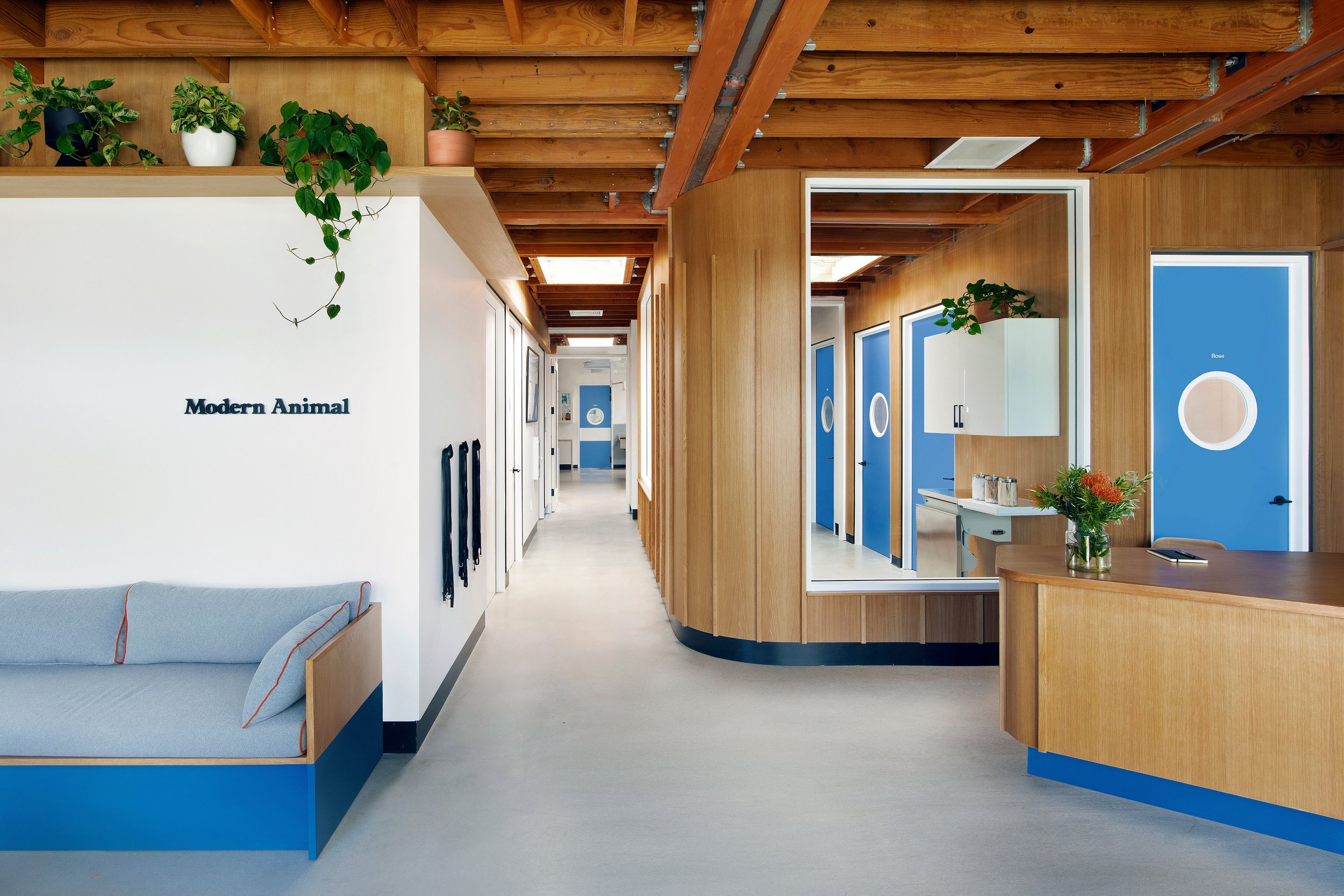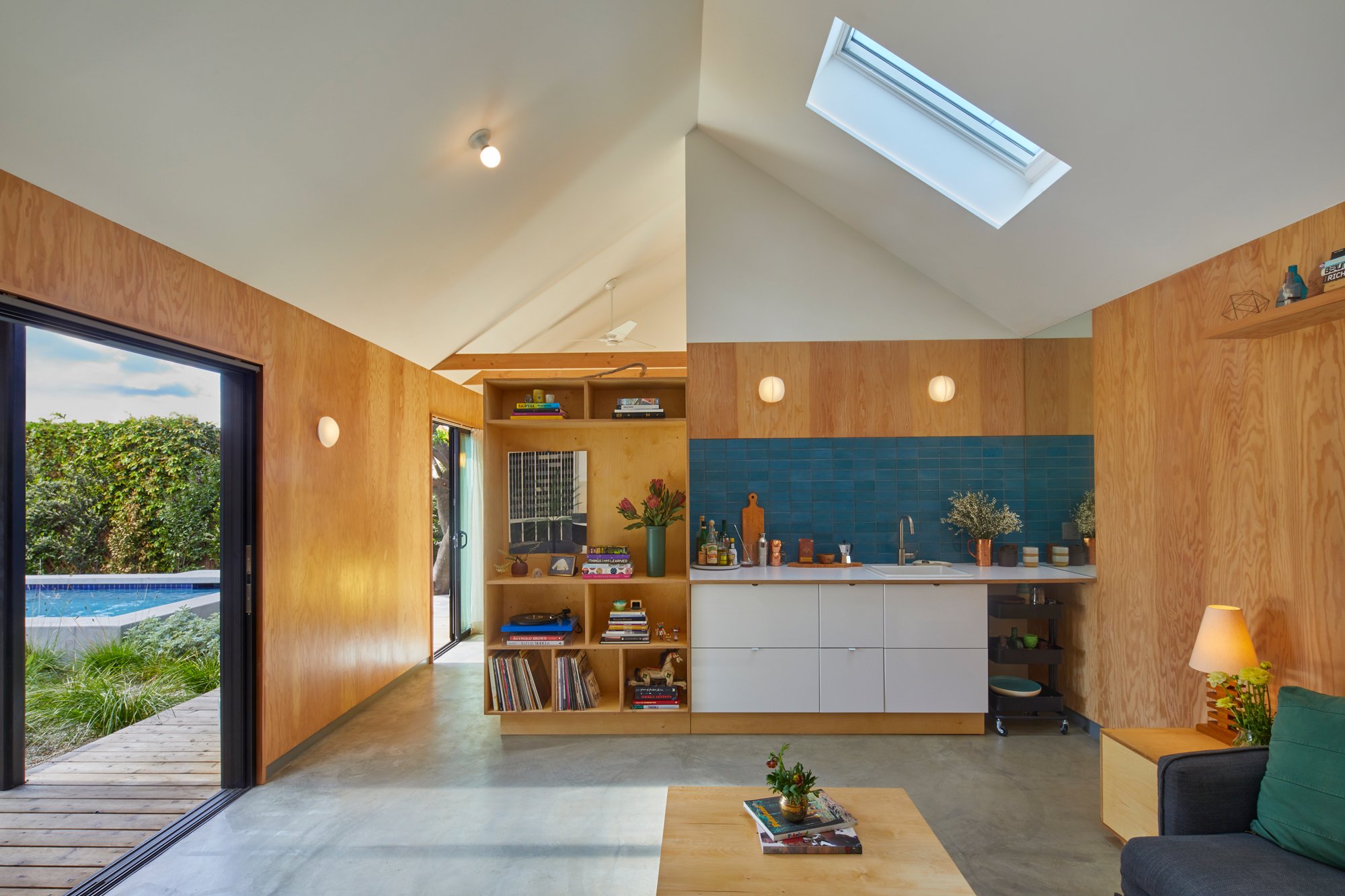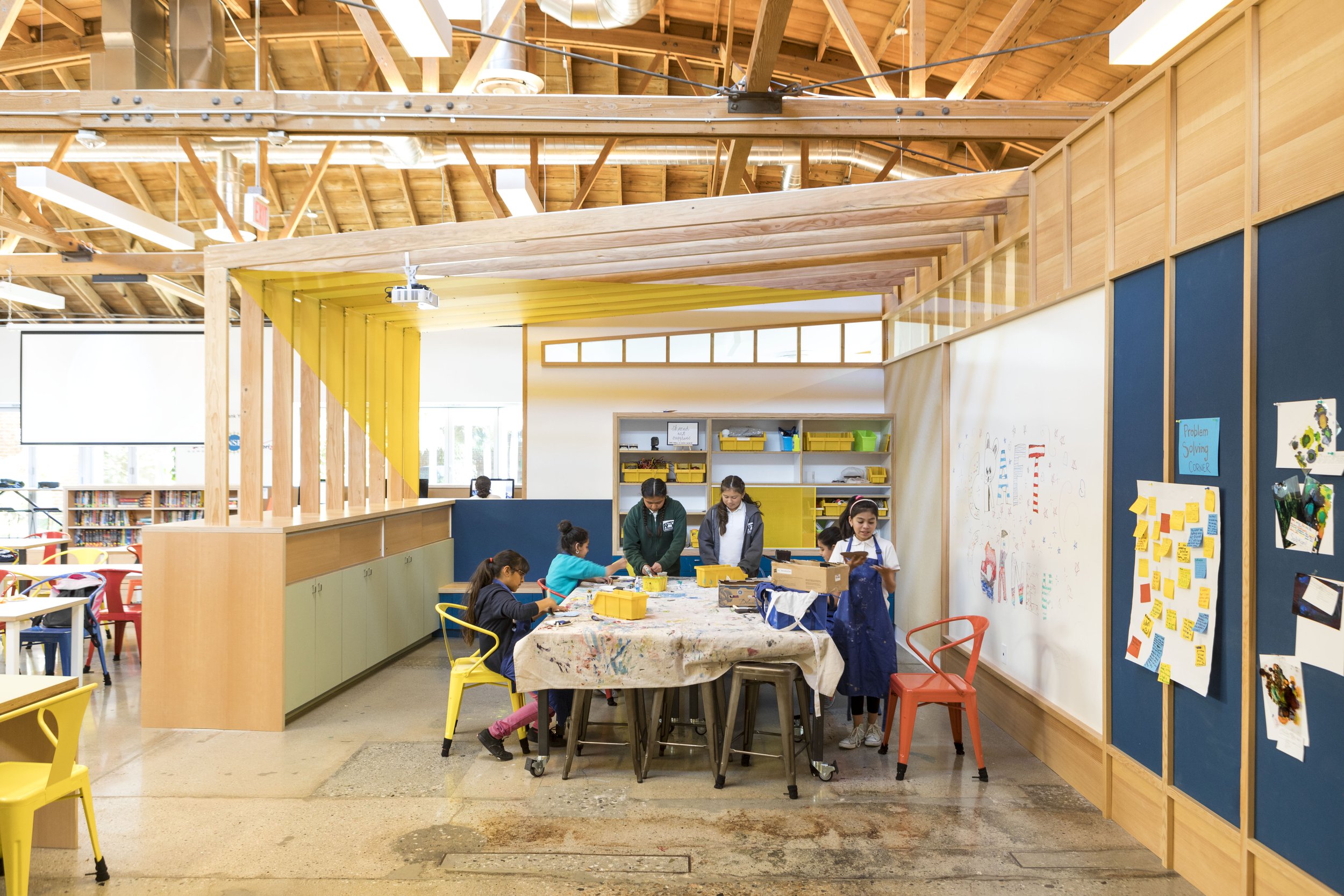Designing Longevity: Design, Bitches' Rebecca Rudolph and Catherine Johnson on Design, Collaboration, and Learning
By Kate Mazade
Rebecca Rudolph and Catherine Johnson are the founders of Design, Bitches, a small Los Angeles-based practice that partners with unique clients to create meaningful spaces. They are equal parts creative risk takers and optimistic pragmatists who navigate the shifting landscape of building with a visionary aesthetic.
Over the past decade, Rudolph and Johnson built up a portfolio of multi-hyphenate spaces, next generation retail and hospitality, originative single family homes, and spaces to dance, display and perform in. They work with creative entrepreneurs to realize new and highly social building concepts and challenge assumptions about how different spaces look, perform and feel. In their interview with Kate Mazade, Rebecca and Catherine talk about creating spaces that people want to be in and finding longevity through innovation.
KM: Where did each of you grow up and how did you first become interested in architecture?
Rebecca Rudolph: I grew up in La Jolla, a beach town suburb of San Diego. I was one of four kids—all creative, rambunctious—our parents are in the healthcare field and did not quite know what to do with us. They encouraged our creativity—took us to museums and let us experiment with making things. There were no architects in the family or in my environment, and I did not know anything about architecture. I liked exploring our neighborhood or the beach, basically being outside in the natural world.
I came to architecture in an unusual way. I was studying philosophy at the University of Paris, and I ended up writing a master's thesis on a prison for mentally ill patients. I was using Michel Foucault's Discipline and Punish to analyze this documentary film about the prison. Through that, I discovered architectural theory. I read City of Quartz by Mike Davis, which was a book about Los Angeles—how social control is aided by the built environment and how social hierarchy can be established through the built environment. I knew I was interested in that way of looking at architecture and the built environment.
I wanted to come back to the US for grad school. I had a friend that was at SCI-Arc. I knew nothing about architecture, but I did know that Mike Davis taught at the school. I visited, and it seemed amazing. At the time, it was in Marina del Rey. The school was very open and had these huge sliding doors that opened to the outside. There was a wood shop, metal shop, photography studio—it felt like an art school. It was just exciting. I decided to apply to the summer program there and then ended up working on a masters in Architecture. My intention was to go to school for architecture, but not actually become an architect. I didn't plan this, but ended up being in an architect role.
Ccatherine Johnson: I also am a native Californian. I grew up in the East Bay, which is suburban San Francisco. As a kid, I was always outside—inventing games, making things out of rocks or branches—and I also love to dance. We're making up performances and creating weird little things kids do. That was my favorite thing to do. Now I look back at the rigor of training in dance in my youth and the ability to make movement creatively, and that sort of encouragement in dance—from little ways of making it your own to larger group choreography—really shaped how I think about creative practice now in architecture.
I was always creative and wanted to pursue a creative profession. I really love the idea of creating places that people experience spatially, which I think is born of making things outside. Dance is exploring yourself in space. I knew very little. I also didn't know any architects practicing. When I applied to undergraduate school, I applied in architecture and interior architecture, because I figured it would be easier to transfer out. I never, ever looked back, so I guess I did intend to be an architect, but I didn't really know it at that time.
Superba Food + Bread. Photo by Laure Joliet.
Modern Animal. Photo by Tim Hirschman.
How did you come to start your practice?
RR: We were working together and knew each other professionally before we became friends and started Design, Bitches. It was a way to create something that would scratch the itch of us trying to figure out what it was about architecture that we were really interested in and passionate about, and how we could forge our own way in the field. Originally, when we started, it was not with the intent of having a firm in the traditional sense. It was more, "How do we think about architecture differently?" Design was our answer to the question, "what is architecture?"
CJ: We had this shared irreverent attitude toward the profession itself. At the time we were really thinking about it in a different way. I have lots of friends who are outside of the profession, and I found myself wanting to find ways to get them excited about architecture and make it feel more approachable, interesting, and accessible to a larger audience. I think we also had this desire to continually adapt and start working on different types of projects in different types of ways. We started doing murals and graphics in the beginning because they were small and affordable ways that we could express ourselves and make a larger impact with a smaller budget, and they can be self guided work.
“We’ve been talking a lot about questions of longevity in architecture and housing densification. We’re excited to see how these smaller insertions can add up over time to something that has a bigger impact—and also how the designs can be adapted for intergenerational living over the long run.”
What are some of your favorite projects that you've worked on with Design, Bitches?
CJ: One of our very first projects was Superba Food + Bread. It represented the opportunity to really look at space in the way that we've come to in our practice. It was a new brand and the restaurant is a public space that people have really woven into their daily lives. I love that it's still there. It's been there for almost 10 years and it really has become this sort of neighborhood —the establishment that we really wanted it to be. We had a lot of free rein in terms of exploring graphics, materiality, exterior and interior space all at once. It served as a platform for us in terms of getting other clients.
In more recent years, we did the B+B House. Not only was it one of our first ground up houses and studios, but it was for a really creative family. It was an exciting collaboration with them. We really thought about the life and longevity of a house, the evolution of the family, and how we could make something that lasts and serves a larger host of inhabitants.
RR: Another one that was really interesting to work on in terms of both the program and figuring out how architecture and a more human scale of furniture combined to create space was 9 Dots, a STEM tutoring center and teacher training space. We were building inside of some larger volumes and trying to figure out how we could get the most use out of the space. How can we make it a teaching space? The structure and the materials that were used were teaching elements for the kids who are going to be there. How could we create space that would be comfortable for different groups of people—the teachers, working adults, and students?
Another recent favorite is Jean Dousset. We did a lot of the design work by modeling it in three dimensions and then working with the fabricators to figure out how to make these things real—not using traditional CAD drawings, but sharing the model back and forth and visiting the shops and local fabricators. It was a very intense integration of technical needs and design aesthetics—yet fun to work on.
I also want to mention our ADU project Midnight Room, which is part of the City of Los Angeles Standard Plan Program. We've been talking a lot about questions of longevity in architecture and housing densification. We're excited to see how these smaller insertions can add up over time to something that has a bigger impact—and also how the designs can be adapted for intergenerational living over the long run.
B+B House. Photo by Yoshihiro Makino.
B+B House. Photo by Yoshihiro Makino.
Midnight Room. Photo by Yoshihiro Makino.
Midnight Room. Photo by Yoshihiro Makino.
When you look back over the course of your career and time at Design, Bitches, what have been some of your biggest challenges and how have you learned to work past those challenges?
CJ: A challenge that most creative businesses face inevitably, sometimes a project won't go forward. It's no fault of our own, or it could be circumstantial or the economy. A project that you've worked really hard for and may have worked on for several years, it may just die. Sometimes, it transforms and something else may come out of it with the client. We've been fortunate to work with really great people. It's interesting to see that long-term disappointment may lead to something else further down the road that we didn't anticipate.
One of the biggest challenges in those moments is searching for your creativity. You have to re-find that excitement and joy in design, which can be really challenging amidst those setbacks. Sometimes you have to give yourself a little time away. I need to take breaks—even just in the afternoons—I need mental space sometimes. If you give yourself a little bit of time, those ideas and sparks come back.
RR: Learning how to run a business—management, finance, HR, strategy—as the business evolves and grows. Developing flexibility and decisiveness that we need to adapt to these changing business environments is a muscle that we've been learning to flex. Small firms are more impacted by shifts in the market, and we need to be nimble. We're always evolving those processes and learning how to make the business sound so we can keep working on projects that are interesting to us and pursuing the kind of work that we want to do.
What are you most excited about right now?
CJ: We've been actively building for over a decade, and we've been talking a lot about the evolution of our practice and where we want to head next. It feels like we're on the precipice of a new chapter. We've built up a layered skillset of expertise in small places. I'm really excited about thinking about how that expertise can apply to larger scale things or collaborations. We've been talking with other creative people, and it seems like there's a lot of excitement in the potential of using our small-scale expertise in other ways that we may not have thought of previously.
RR: Within this Los Angeles design ecosystem, there are so many talented creative people. We've been making new connections in and outside the field—seeing how we can be part of larger social infrastructural changes that are happening. We're starting to pursue public projects—institutional, infrastructure, and education projects—and continuing our work with entrepreneurs. Modern Animals, Jean Dousset, and Fatty Mart are all clients that have a lot of vision for how they can change their industry—to make it more sustainable, better places to work, and more seamless for the customers. We're excited to continue to partner with these kinds of clients.
“One of the greatest transformations I’ve been noticing lately in our architecture and design circles here in LA is a level of transparency. People want to uplift each other and share information—like how hard it is to start a small business—and really want to help each other succeed.”
What impact would you like to have on the world?
RR: We want to improve everyday life through design. We want to create meaningful spaces that bring people together, bring joy, and do no harm. For us, success is to continue to work with clients whose missions we support and to branch out into new project types and disciplines so that we're always challenging ourselves and pushing to see how we can have these kinds of impacts.
CJ: We really want to create spaces where people want to be. In this world right now, you need to give people a lot to want to be anywhere outside their house. That's going to shape our trajectory—continuing to make places that people really want to be and want to be more than once.
Who in or outside of the architecture industry do you admire?
CJ: At this particular place in time, I find myself admiring people who fall into two different camps. The first is architectural work that was crafted even a century ago, but feels so current and thoughtful to both the climate and how it may change, so I really admire Carlo Scarpa and Alvar Aalto. They just keep coming back around as this standard of all of those things that are good and interesting. I find them endlessly inspiring.
The other camp is creatives of all varieties who found longevity through the invention. I think about musicians whose creative outlet and what they make reflects how their paths changed throughout the course of their lives and how they're experiencing the world at any given time. I think about how you could apply that in terms of design. We're all living in this moment. While we're thinking about longevity, we're also thinking about how we reflect the time that we live in. There are things that we may be inspired by right now and that's always an evolution. All these little bits of reinvention along the way I find really inspiring.
RR: We had, we always talk about Es Devlin, who is an environment designer and creates environments that really surprise and delight with a lot of technical prowess. That's inspirational just because they are really places that create a sense of wonder and bring people together into a collective from experience.
I have been inspired recently by my friends and colleagues who are reinventing themselves or questioning their purpose and who continue to do so. It's a hard thing to do—to continually challenge yourself and what you're doing. Additionally, other small businesses that grow strategically and really focus on their mission and their commitment to good design, as well as creating an office culture that works for the team.
Jean Dousset. Photo by Yoshihiro Makino.
9 Dots. Photo by Laure Joliet.
What advice do you have for people starting their career?
CJ: There's a lot of excitement and encouragement to do your own thing straight out of the gates. One big piece of advice—because I know it was instrumental in the trajectory of my career—is don't underestimate the potential of learning through working with others, whether you're collaborating with your peers or learning from people who have been working in different fields. If you're interested in furniture, fabrication, architecture, different types of firms—there's so much to learn from others who've been doing it. You don't necessarily need to invent the wheel yourself. There's a lot of great information and lessons learned to share.
One of the greatest transformations I've been noticing lately in our architecture and design circles here in LA is a level of transparency. People want to uplift each other and share information—like how hard it is to start a small business—and really want to help each other succeed. The more we all succeed together, the better it is for everyone. Take any opportunity to be independently creative, if you get given a little task on a large project straight out of school. Own it and embrace it, because it gives you a chance to learn.
RR: Find out where your interests lie and pursue those. That doesn't have to mean starting your own firm immediately. It can mean asking, "Where can I go to learn more about X, Y, and Z?" If you're really interested in the work, then it's going to make it easier for those parts of the profession that are boring and repetitive. Don't be afraid to change course and try something new, especially if it's something that architects typically don't do. One of the things that Cathy and I have built from the beginning is not letting our architecture licenses limit us to doing a certain kind of work or sticking with buildings. There's a lot more we can do.
Always ask questions. People generally want to share the knowledge that they have.
Persistence and passion. People ask us what we look for in a hiring candidate. Persistence and a real desire to work with us specifically are something really important. If there's something you really want to do, just keep trying and eventually something will give.
This interview has been edited and condensed for clarity.








